Abstract
The daily cycle of leaf elongation rate, water potential, and solute potential of maize and sorghum, as well as temperature, were monitored in the field. Major climatic features were high radiation and a minimum air temperature of about 12 C. Leaf elongation of both crops was slowest at night, presumably because of low temperature. Peak elongation rates were in daytime when leaf water potential (Ψ) was low. Solute potential also decreased during daylight, thus permitting the maintenance of appreciable turgor pressure, a critical parameter for cell expansion.
Leaf Ψ versus relative water content (RWC) curves were developed by sampling detached leaves at intervals as they dried quickly in the laboratory. At a given RWC, Ψ was lower in leaves at midday than early in the morning, which is evidence that the decrease in ψ. at midday was caused by an increase in the amount of solute in the tissue. Estimates of ψ. at 100% RWC were 4 bars lower at midday than early in the morning in both crops. Soluble sugars, mainly nonreducing, accounted for most of the observed ψ. decrease in sorghum leaves. Shading the leaves from light eliminated most of the solute buildup.
Full text
PDF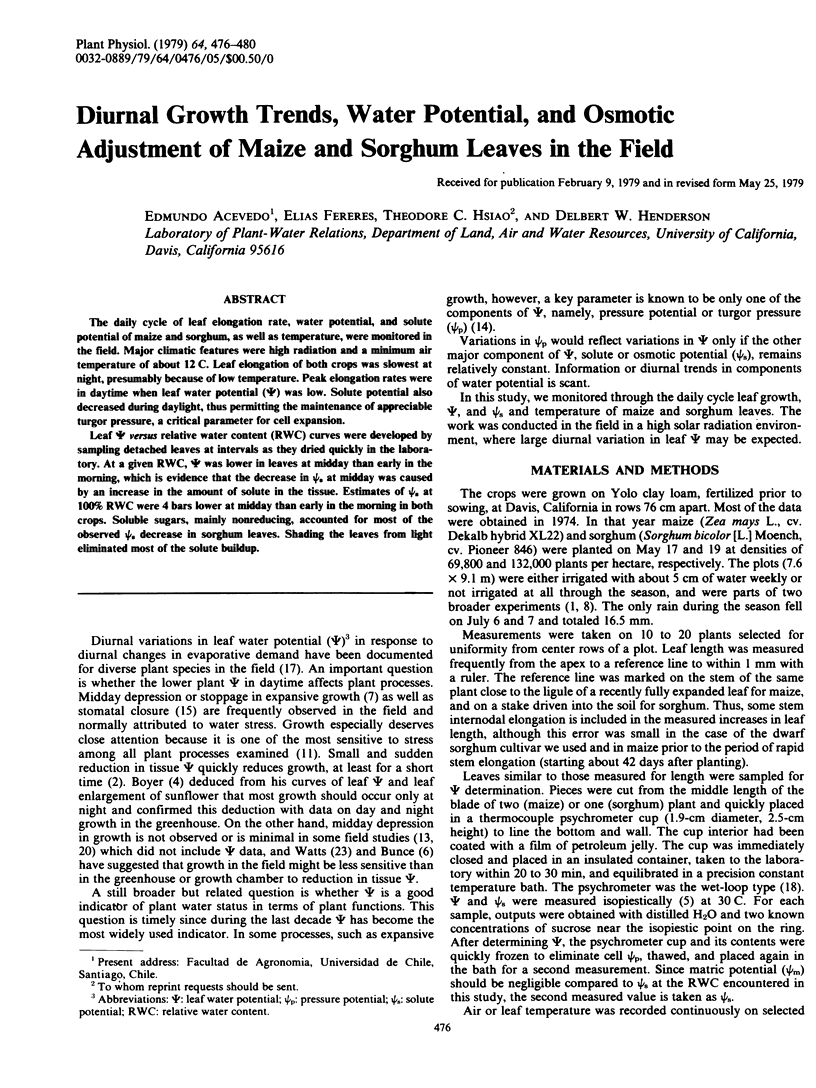
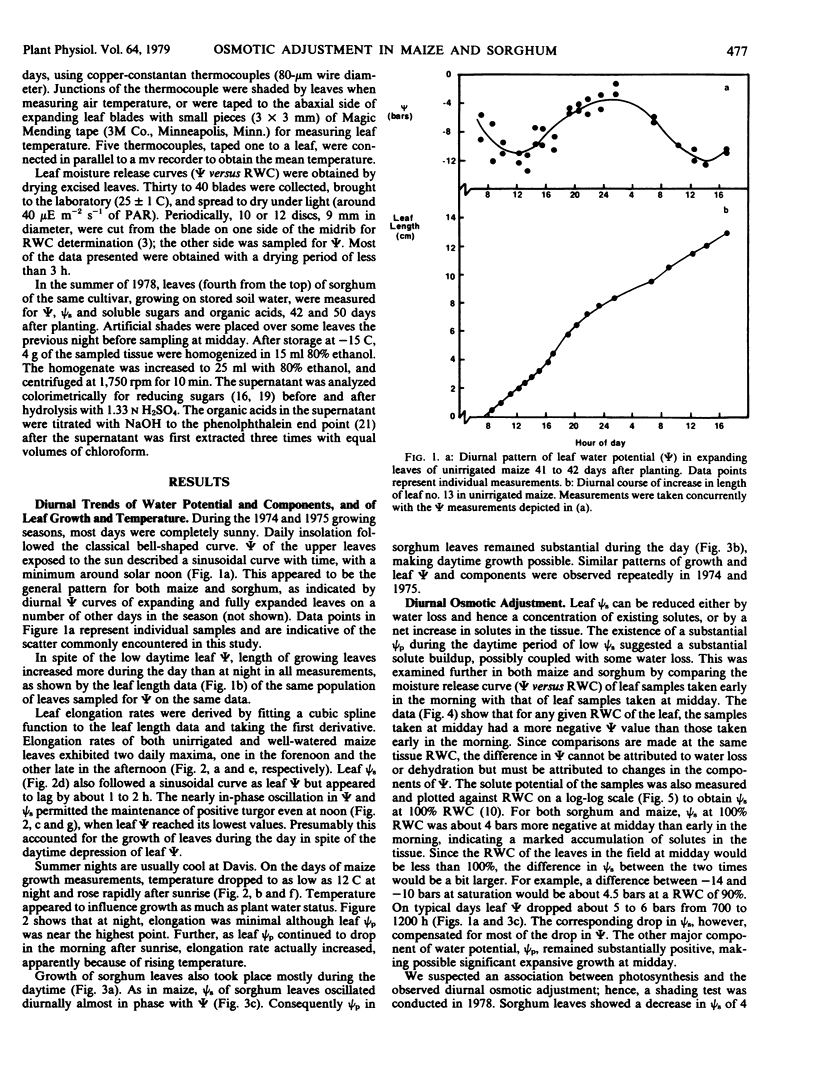
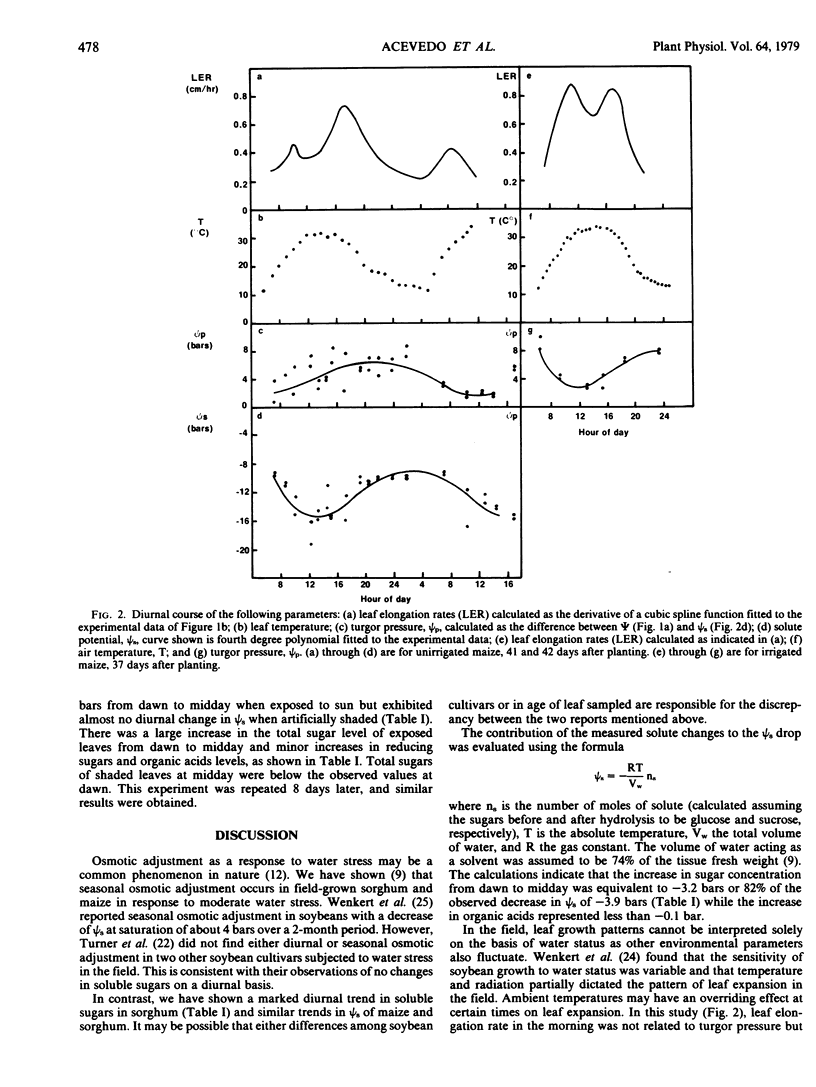
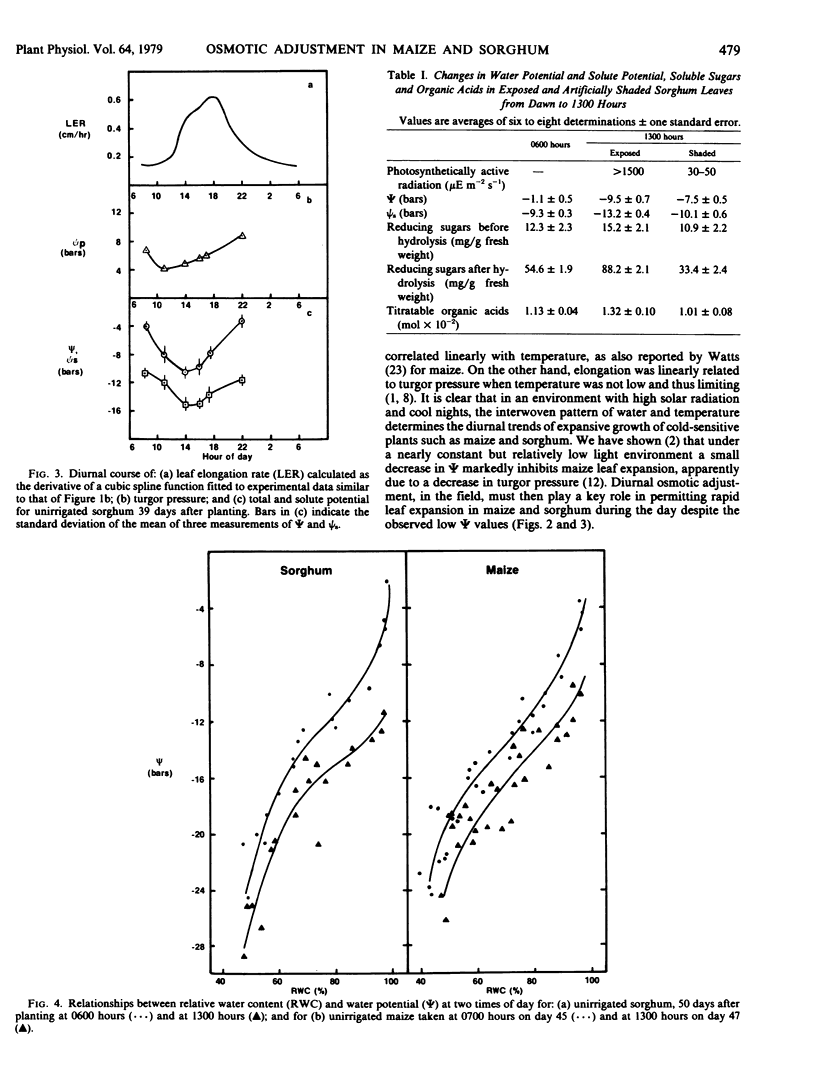
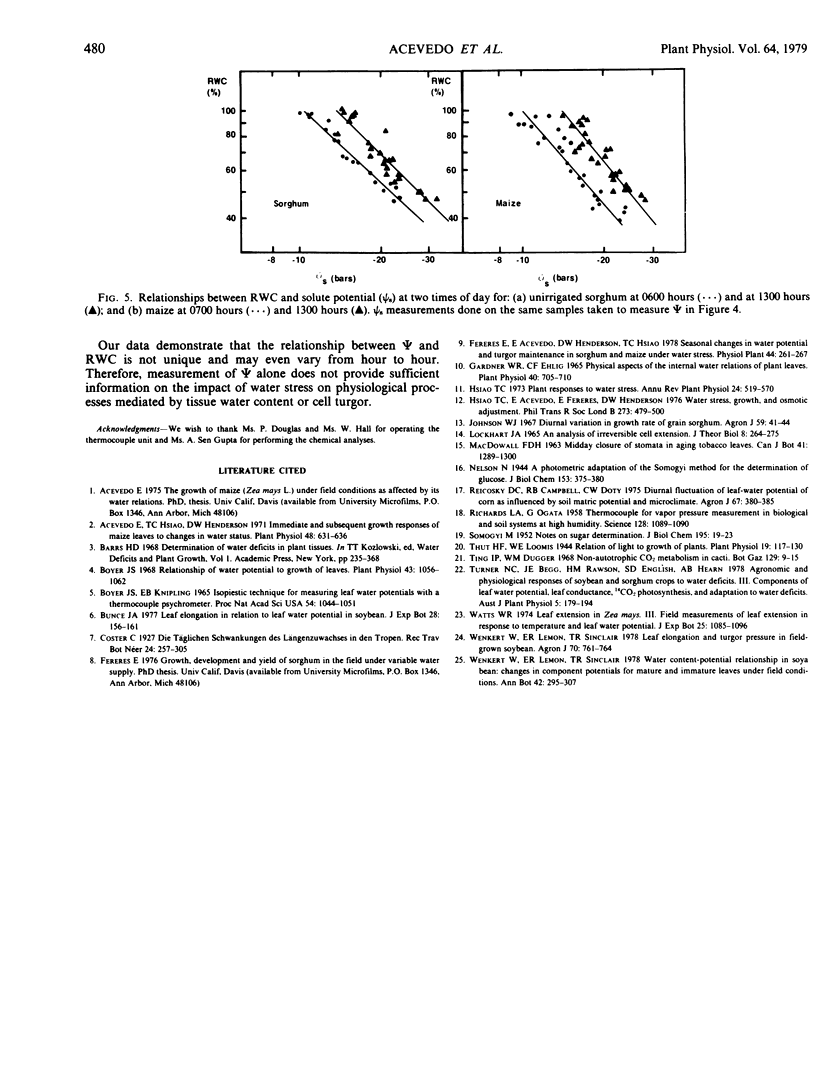
Selected References
These references are in PubMed. This may not be the complete list of references from this article.
- Acevedo E., Hsiao T. C., Henderson D. W. Immediate and subsequent growth responses of maize leaves to changes in water status. Plant Physiol. 1971 Nov;48(5):631–636. doi: 10.1104/pp.48.5.631. [DOI] [PMC free article] [PubMed] [Google Scholar]
- Boyer J. S. Relationship of water potential to growth of leaves. Plant Physiol. 1968 Jul;43(7):1056–1062. doi: 10.1104/pp.43.7.1056. [DOI] [PMC free article] [PubMed] [Google Scholar]
- Gardner W. R., Ehlig C. F. Physical Aspects of the Internal Water Relations of Plant Leaves. Plant Physiol. 1965 Jul;40(4):705–710. doi: 10.1104/pp.40.4.705. [DOI] [PMC free article] [PubMed] [Google Scholar]
- Lockhart J. A. An analysis of irreversible plant cell elongation. J Theor Biol. 1965 Mar;8(2):264–275. doi: 10.1016/0022-5193(65)90077-9. [DOI] [PubMed] [Google Scholar]
- Richards L. A., Ogata G. Thermocouple for Vapor Pressure Measurement in Biological and Soil Systems at High Humidity. Science. 1958 Oct 31;128(3331):1089–1090. doi: 10.1126/science.128.3331.1089. [DOI] [PubMed] [Google Scholar]
- Thut H. F., Loomis W. E. RELATION OF LIGHT TO GROWTH OF PLANTS. Plant Physiol. 1944 Jan;19(1):117–130. doi: 10.1104/pp.19.1.117. [DOI] [PMC free article] [PubMed] [Google Scholar]
- Twente J. W., Twente J. A. Regulation of hibernating periods by temperature. Proc Natl Acad Sci U S A. 1965 Oct;54(4):1044–1051. [PMC free article] [PubMed] [Google Scholar]


